Eight teams received implementation awards following the virtual pitch fest on September 30. They were selected by a final evaluation panel for their potential to advance climate resilience and racial equity.
Winning Teams:
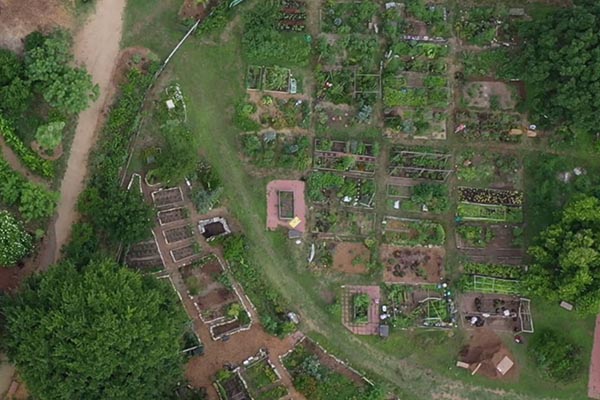
Rooting & Blooming: Cultivating a Fruitful Commons at Festival Beach Food Forest & Community Garden

Place: Austin, Texas, United States
Learn more: https://festivalbeach.org/
Austin is a rapidly growing city with interconnected affordability, gentrification, displacement, food insecurity, and climate crises disproportionately affecting communities of color, including the historically Tejano/Chicano East Cesar Chavez neighborhood. The Rebekah Baines Johnson Tower is an anchor of affordable housing for elders and people with disabilities in this area, and it is currently expanding into a multi-use complex called “The Hatchery” that will double affordable housing units from 250 to 500. Directly next to this property are the Festival Beach Food Forest and Community Garden, a CapMetro bus stop, and access to the 10-mile Ann and Roy Butler Hike-and-Bike Trail around Ladybird Lake. This site is strategically located to serve an area with the greatest need, and the Tower’s guaranteed affordable housing will help the team avoid pitfalls of environmental gentrification. This project aims to transform this parkland where Festival Beach meets The Hatchery into a thriving community nexus for climate justice focused on abundant, free, healthy, and hyper-local food access—a critical need, as an estimated 43 percent of residents experience food insecurity. The project will also center cultural celebration and preservation, nature education, and regenerative land stewardship. To date, the project team has already tested a pilot project, transforming a former brownfield into a lush and biodiverse edible forest garden. Now, they aim to expand to their impact to create a thriving community resilience hub throughout the entire Festival Beach + Hatchery campus. If funded, the team will be able to hire paid staff for community organizing, site management, and assessment. The team plans to increase the size of the pilot food forest to more than five times its current footprint—producing more food to be distributed to the community in partnership with the Serefina Food Pantry while regenerating soil, restoring watersheds, and reserving carbon in a hot spot of food insecurity. The project will incorporate a paseo (pathway) filled with artwork honoring the neighborhood’s Tejano heritage that weaves throughout the campus, and a multi-use community pavilion for outdoor learning, tool and seed storage, a teaching kitchen, and picnicking. What is more, by expanding the food forest and collaborative partnerships with Festival Beach stakeholders, this project will be on the leading edge of Austin’s Climate Equity Plan, providing a model for nature-based solutions for thriving and equitable cities.
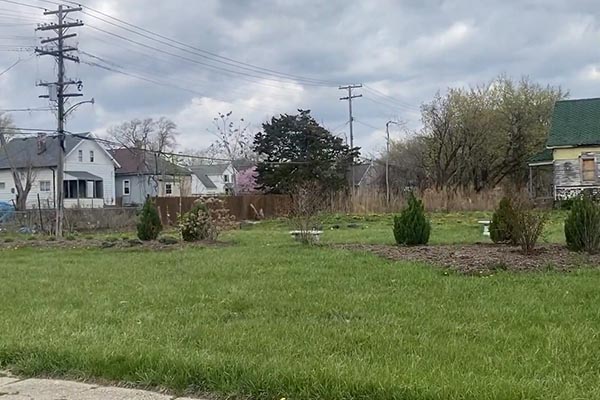
Alley Activation as a Neighborhood-Based Sustainability Strategy

Place: Detroit, Michigan, United States
Learn more: https://www.canfieldconsortium.org/
Alleys are a common form of urban infrastructure that have historically had a clear purpose— such as trash collection, alternative entry to residences, storage, or as a conduit for electrical and telephone service lines—with these spaces also informally used as walking and bike paths, playgrounds, and meeting spaces. The City of Detroit stopped maintaining alleys in the late 1980s, granting control to homeowners and relying on residents to maintain the spaces. Since then, however, due to lack of resources and declining population, many of the city’s alleys have devolved into untended spaces associated by many residents with blight and disorder. In 2020, Detroit began investing in the large-scale clearance of alleys. As these alleys are cleared and come back into use, they open up opportunities for economic, environmental, and social innovation. The value of urban alleys as a source of sustainability solutions is an emerging area of research and practice, but in the past, green infrastructure projects in Detroit have lacked attention to social equity and political inclusion in decision-making. Sustainability efforts are often pursued without regard to their implications for social equity or without incorporating local knowledge of social and physical environments. In the absence of community representation, green space investments may re-entrench preexisting inequalities. Initiated by neighborhood residents and centered on their ideas, skills, and talents, Canfield Consortium’s proposed project aims to address this issue of equity. The team proposes that newly cleared alleys be activated to serve as a green capillary system that significantly contributes to municipal sustainability goals as well as neighborhood cultural, social, and economic life. This pilot project will serve as a small-scale proof-of-concept, advancing the real-world application of sustainable technology by using a designated alleyway to serve as an open-air learning laboratory and demonstration site. The team will work closely with partner organizations, such as University of Michigan-Dearborn, the Wildlife Habitat Council, and DAVIS (Detroit Ain’t Violent It’s Safe), as well as local residents, to re-engineer the alleyway as a flexible platform for integrating recycling, upcycling, green energy, composting, and rainwater harvesting with community-driven, place-making goals. Participants will gather primary data on the platform’s outcomes, such as stormwater management, off-grid energy production, and social engagement. The project will also map and model its potential extension throughout Detroit’s extensive alleyway network, projecting the environmental, social, and economic benefits to both local communities and city government if alley activation is implemented on a citywide scale.
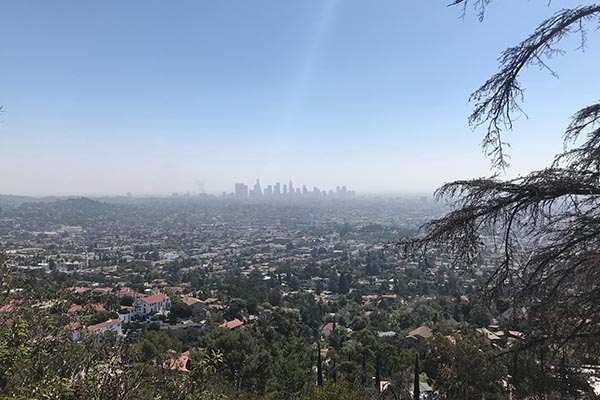
Empowering Community-Based Organizations for Green Infrastructure Planning and Development

Place: Los Angeles, California, United States
Learn more: https://www.watershedhealth.org
According to state definition, 32 percent of California’s population—or about 12 million people—qualify as living in a “disadvantaged community.” Of those, approximately four million live in the Greater Los Angeles area. These dense communities in Greater Los Angeles suffer from a lack of open space, exposure to toxic hazards, poor air quality, localized flooding, poor public health, and poor surface water quality. Investments in green infrastructure projects are a vital tool in addressing these challenges. In the years ahead, the County of Los Angeles will see an investment of billions of dollars in parks and stormwater infrastructure projects intended to create climate resiliency and improve the health of urban forests and watersheds. There are many community-based organizations (CBOs) eager to initiate these projects throughout the region. Many of these organizations are well respected in their communities and can effectively educate and engage their constituents in project development. However, many also lack knowledge about the solutions and best practices for climate, water, and urban forests, such as how to identify site-specific climate-adaptive design responses that ensure community resiliency. Engineers, architects, and landscape planners possess these skills and expertise—but because of the siloed nature of these industries, they are often unable to reach communities effectively. In response to this disconnect, this team’s proposed program will develop the long-term capacity of local stakeholders using a CBO mentor-mentee model to redesign neighborhoods, schools, and communities to achieve relevant social impacts in health and safety through water resources. For over 20 years, the Council for Watershed Health has conducted science-based research to inform green infrastructure projects, and they will use this knowledge base to lead education, engagement, and technical assistance in partnership with three local CBOs. The team will serve as mentors and provide technical assistance and capacity-building support to mentees to implement green infrastructure projects within under-served communities across the Los Angeles region. The project team will identify two communities that can benefit from investment in nature-based solutions and climate resiliency, and will work with them to develop well-conceived solutions that address county-wide water issues while supporting community-driven priorities.
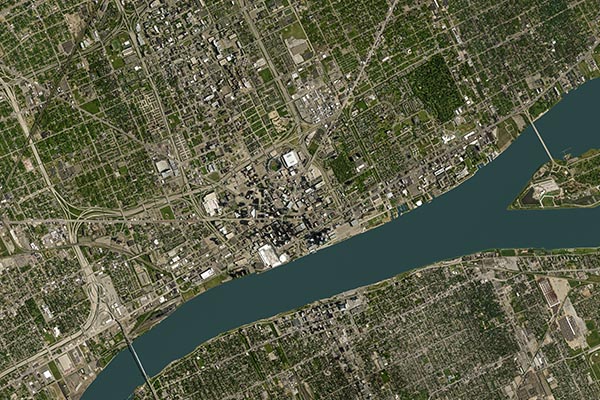
Anchoring Community, Resilience, and Equity through Rogell Park

Place: Detroit, Michigan, United States
Learn more: www.ecoworksdetroit.org
In 2018, the City of Detroit purchased Rogell Park—a 98-acre, undeveloped green space at the intersection of five distinct neighborhoods—to manage stormwater runoff for neighboring communities. These communities suffer from environmental injustices endemic to a post-industrial city, such as air and soil pollution, overburdened stormwater infrastructure, increased exposure to extreme heat, and lack of access to safe green space. Climate change threatens to exacerbate these injustices. Today, Rogell Park represents an opportunity to build climate resilience through stormwater management and carbon sequestration, reduce pollutants through soil amendments, and provide critical access to green space for recreation and connections to nature. It also offers an opportunity to build equity through community-ownership of design and programming. This team aims to implement “(socially) just greening” strategies by supporting a community-led redevelopment of the park. It also hopes to build equity through “green reparations” by pursuing deep collaboration and coalition-building among neighborhood groups and responsive, nature-based solutions to environmental injustices and climate threats. Under the guidance of the Berg-Lahser Community Association, the team has proposed to build a coalition of community leaders from each of the five neighborhoods surrounding Rogell Park, prioritizing community-led planning for the development, programming, and maintenance of the park. This community-driven redevelopment of the park is also an opportunity to reduce the impacts of climate change and support the distribution of nature-based climate solutions to residents in District 1. With the support and technical expertise of the City Planning Department, green stormwater infrastructure will be installed, taking advantage of the natural landscape to divert and detain stormwater during heavy rain events. As Rogell was formerly a chemical-intensive golf course, EcoWorks will support soil amendments through innovative remediation and carbon farming programs. Under the guidance of community members, partners will promote increased knowledge of and connection to nature and nature-based climate solutions among local residents. EcoWorks will also coordinate the distribution of resources to immediate community members who are interested in applying nature-based climate solutions in their homes or neighborhoods. In the long term, the team plans to position this strategy as a model of green reparations for other green space redevelopment projects across Detroit, and beyond.
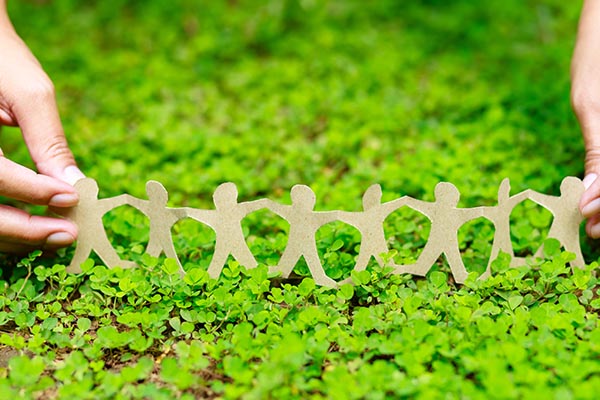
Connecting the C’s: Color, Class, Climate, Conservation, and Collaboration for a Thriving Community

Place: Gulfport, Mississippi, United States
Learn more: https://eeechogulfport.wixsite.com/eeecho
Residents of Gulfport’s Turkey Creek and Forest Heights neighborhoods face a long history of environmental degradation perpetuated by zoning established in the 1930s, when lands in and around Black neighborhoods were zoned for industrial activity. For more than 80 years, the area has faced high exposure to air, water, and noise pollution, generating severe public and ecosystem health issues. Further, poor state-level permitting processes that rely on local zoning have done little to prevent damage. The environmental degradation is expected to worsen with climate change. This crisis may lead to communities being cut off in access to services, cause expensive structural damages, and negatively impact home values while driving up flood insurance prices. Until the zoning is addressed and permitting processes become more rigorous, the Turkey Creek watershed and its inhabitants will continue to bear an excessive burden amplified by climate change. This team proposes enhancing local conservation of critically important coastal and watershed habitats by addressing systemic barriers. Specifically, EEECHO will begin efforts to comprehensively improve local zoning and the Mississippi Department of Environmental Quality permitting process, with the goal of addressing policies and laws that force local conservation and community organizations to battle individual industrial development threats rather than holistically nurturing their ecosystem. They will develop a strategic educational campaign to ensure that community residents and local government officials understand the issues and options. Educational activities will capture the history and legacy of racist practices that led to the current zoning, and impart an understanding of how zoning impacts not only environmental health, but community health, economic opportunity, and resilience. The educational efforts will span a multitude of audiences, including residents of Turkey Creek and Forest Heights, students in Gulfport, city elected officials, state legislators, and local, state, and federal agency officials. Concurrently, EECHO will continue its work to prevent new development proposals that could cause harm, including informing federal agencies, testifying in court, and petitioning relevant agencies.
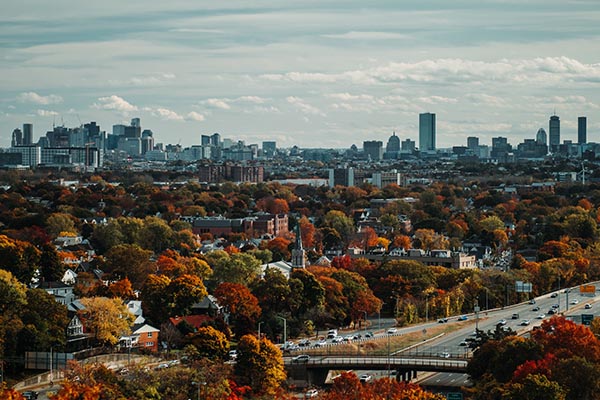
Witness Trees

Place: Baltimore, Maryland, United States
Learn more: www.turnerstation.org
Baltimore is a post-industrial port city located in the upper Chesapeake Bay. Climate models project that coastal communities in the region will see higher than average flooding impacts due to the combined effects of land subsidence, general sea-level rise, and ocean “swelling” in this part of the Atlantic. Baltimore also suffers from legacy impacts of redlining in many forms, one of which is significantly fewer trees and green spaces in BIPOC communities. This lack of investment in green infrastructure in these communities is linked to poorer air and water quality, higher asthma rates, cardiovascular disease, mental health issues, higher crime rates, and more. Baltimore also has a 20 percent unemployment rate (pre-pandemic). As an African-American waterfront community surrounded by heavy industry and suffering from the collapse and legacy pollution of its primary industrial employer, Turner Station is, in some ways, an environmental justice poster child. The community’s significant amount of open space and eagerness to be a leader in climate resilience and green equity means it can serve as a model of “greenlining”—using green infrastructure as a central pillar of community revitalization efforts. Witness Trees is a collaborative effort between the Greater Baltimore Wilderness Coalition, Baltimore County, Baltimore Tree Trust, and the historically African-American Turner Station Conservation Teams. The proposed project builds on the larger sea-level rise protection effort by focusing on upland restoration: planting hundreds of trees in Fleming Park and throughout the community and identifying other nature-based restoration opportunities. The trees will increase residents’ access to nature and enhance ecosystem services like lower air temperatures, decreased flooding, increased wildlife, and better air quality. The trees will be planted and cared for by community youth who enlist in the inaugural cohort of Baltimore Climate Corps, a regional initiative that will hire, mentor, and train local youth for environmental careers. In planting a new generation of “Witness Trees”— sentinel species in culturally and ecologically significant landscapes—this new generation of conservationists will mark and celebrate the region’s Black, Brown, and Indigenous communities’ stories and embodied wisdom. The Witness Trees project will bring together and leverage existing partnerships and programs, such as Turner Station’s Fleming Park Resiliency and Restoration project, an innovative project that uses dredged sediment from the Baltimore Harbor to restore tidal wetlands and enhance local resiliency. Through this project, the Witness Trees team aims to generate positive impacts in the near term and catalyze investments in natural and nature-based strategies for the Baltimore-metro region in the long term.
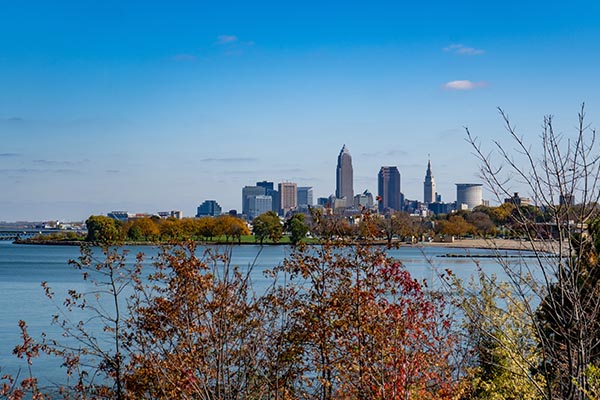
Cleveland’s Urban Tree Hub

Place: Cleveland, Ohio, United States
Learn more: www.wrlandconservancy.org
Once known as the Forest City, Cleveland has lost half of its tree canopy coverage due to development, disease, and lack of maintenance, and an estimated 97 acres of tree canopy is lost each year. As tree canopy continues to decline, Cleveland is heating up due to urban heat island effects and climate change, which cause extreme weather, public health problems, and water quality issues. Even at its current level, Cleveland’s tree canopy coverage creates vital public health benefits—but these benefits are not equally available to all residents because canopy levels vary from neighborhood to neighborhood. Neighborhoods on Cleveland’s east side, which already face poverty and disinvestment, also have low tree canopy coverage, further exacerbating the environmental injustice faced by these communities. To begin to address this inequity, Western Reserve Land Conservancy, Rid-All Green Partnership, and Burton Bell Carr Development have proposed a joint effort to create an Urban Tree Hub in the Kinsman neighborhood of Cleveland. The project will grow, plant, and give away trees to the residents of the east side of Cleveland. In the first 24 months, the project will plant 100 trees, distribute an additional 400 trees to residents, and train 25 residents to plant and care for trees through a tree steward training program. By connecting to residents through trusted institutions, such the Burton Bell Carr community development organization, the project team will develop authentic relationships with communities most in need of reforestation. As residents learn about trees and their benefits, they will become more willing to consider planting a tree in their own yards. The tree steward training will also be offered to local volunteers who can then serve as leaders in their communities, engaging neighbors in planting and caring for trees. The Urban Tree Hub will further be the future location of an urban tree nursery, with a planned land purchase and infrastructure improvements to prepare to plant nursery stock. Throughout, the project team will continue to explore opportunities to create workforce development training, with the goal of employing individuals who have had experience with the incarceration system in the planting and maintenance of trees. If successful, this project will provide a scalable model for bringing trees directly to the neighborhoods that need them the most and for empowering communities to tackle the challenges of climate change through workforce development opportunities.
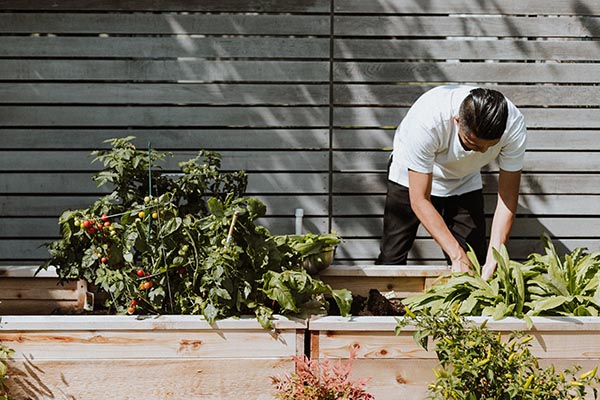
NYC Foodways Collective

Place: Bronx, New York, United States
Learn more: http://www.ympj.org/
Across New York City, people of color and recent immigrants suffer disproportionately from harsh environmental stressors that follow a long history of inequitable development and deleterious health outcomes. Policies and practices based on a history of structural racism and discrimination have created neighborhoods throughout the city with disproportionate environmental hazards, high rates of poverty, and limited access to resources that promote health. These neighborhoods lack sufficient open space, which is critical for improving mental health, recreational opportunities, air quality, and overall quality of life. At the same time, climate change is exacerbating these problems: rising temperatures, rising sea levels, and more frequent storm events hit communities harder due to lack of green space, dwindling infrastructure investment, and poverty. Additionally, communities of color are often food deserts that have contributed to reduced lifespans when combined with economic inequality. In response to these challenges, this project team has proposed a collective impact project that seeks to enhance community resilience by building a community-driven, bottom-up governing body to design and implement “Foodways” in each borough, building on a successful existing model in the Bronx. Youth Ministries for Peace and Justice defines Foodways as public sites where gardening, foraging, environmental education, climate resilience, and explorations of cultural and nutritional occur. Foodways offer a strategic entry point to address complex array of aforementioned challenges, and can transform derelict green spaces to lower temperatures, provide outdoor activities, absorb stormwater, provide access to healthy foods, and organize the community around resilience. The overarching goal of this project is to enhance community climate resilience and improve health by strategically managing green spaces. The team will organize five community-based organizations from each borough into a governing structure, provide technical assistance and support for each borough’s Foodway, facilitate the development of community resilience plans, influence NYC parks policy to include Foodways, and build a strong network of community organizations advocating for the enhanced use of green spaces in NYC. Ultimately, the team hopes that the decentralized, community-driven nature of this project will increase neighborhood resiliency through local planning and implementation that reflects the unique needs, strengths, and limitations of each participating neighborhood.
Challenge Finalists:
Finalists were chosen from a pool of 52 applicants, whose work represents a range of community-led efforts across the United States and Puerto Rico, Canada, and Mexico, as well as several Tribal nations and Indigenous groups. Each finalist team, including the eight winning teams, received a $10,000 capacity-building grant over the summer, along with training and mentorship opportunities. Download the Thriving Cities Challenge booklet to learn more about their projects and other applicants to the Challenge.
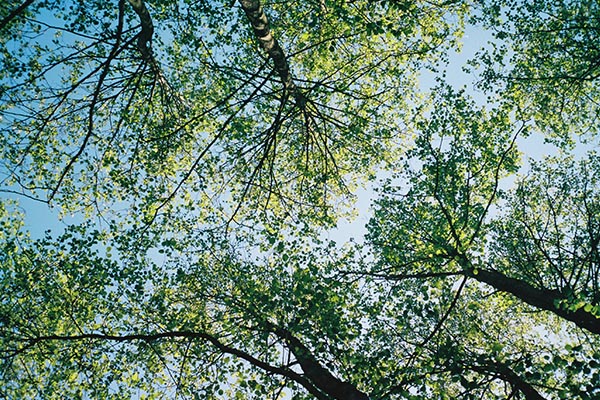
Connecting Canopies regional urban forestry conservation collaboration

Place: Portland, Oregon, United States
Learn more: theblueprintfoundation.org
As in many cities across the country, Portland’s BIPOC and low-income communities tend to be concentrated in neighborhoods with less tree cover that experience higher air temperatures, lower air quality, and reduced health outcomes as compared to residents from wealthy, well-treed, and whiter neighborhoods. These environmental injustices are exacerbated by rapid development, gentrification, and displacement, while at the same time, poverty and disinvestment undermine residents’ perceived benefits of trees—which are frequently viewed as a liability due to the financial burden of maintenance. What is more, volunteer tree planting programs mostly benefit neighborhoods and families with higher incomes, while the rest of the neighborhoods remain under-treed. The Connecting Canopies team has proposed a regional urban forestry collaboration among city partners, conservation organizations, and BIPOC organizations to expand urban tree canopy, mentor and employ BIPOC youth and community members as tree stewards, and support municipal investment, planning, and action for trees. Over the next two years, the project team will share knowledge and resources through quarterly forums, and convene a diversity of local organizations including regional municipalities, BIPOC community-based organizations, and other health and nature-focused nongovernmental and municipal agencies. The team will also use a chartering process to formally establish a sustainable and impactful collaborative that will work toward environmental/climate justice goals and workforce/movement diversification, identify funding opportunities and develop a regional urban forestry strategyThe collaborative will explore workable solutions to increase the capacity of community-based organizations to access public and private investments in order to lead neighborhood-level action. The project team has also proposed to create a youth career development program with an urban forestry and equity training curriculum and, ultimately, train and provide stipends for as many as 30 BIPOC youths each year. Throughout, the team will gather and collate community feedback, and all participants will receive a stipend for their time and input. In the long term, this team hopes Connecting Canopies will provide a model for linking BIPOC community learning, employment, and advocacy for enhanced spending on urban tree canopy and to support public-private regional partnerships for local action.
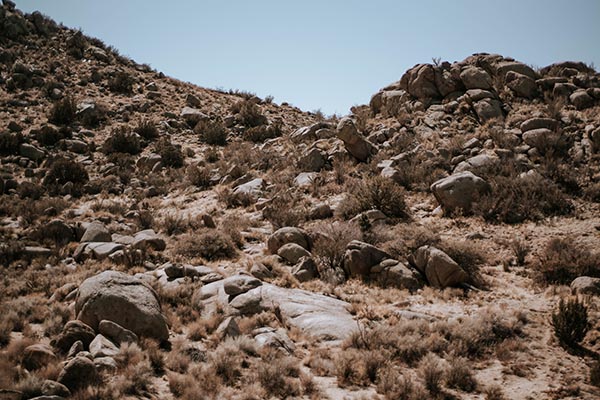
Equitable Engagement in Climate Resiliency through the Albuquerque Backyard Refuge Program

Place: Albuquerque, New Mexico, United States
Learn more: www.friendsofvalledeoro.org
The Southwestern US is warming at four times the global rate, and Albuquerque’s existing heat island effect and frequent droughts will amplify the impacts of our changing climate. This project team’s goal is to support its local community in achieving shared climate resilience goals through the creation of a neighborhood network of drought-tolerant wildlife gardens and green infrastructure. At present, the Backyard Refuge Program is supporting Albuquerque communities with access to green space and resources, helping them create pockets of drought-tolerant habitat in yards, patios, and apartment balconies. The program, however, was originally established to address larger environmental justice issues and build stronger, more resilient communities—and it is poised to expand. Its new potential is further strengthened by a recent Climate Action Planning process by the city, during which residents expressed that climate mitigation actions should have a commitment to equity, inclusion, and accessibility, with decisions made and acted up in partnership with frontline communities The proposed project will provide early, meaningful, and ongoing opportunities for participation in climate resiliency, especially within high impact, low-resource communities. For example, the prevailing norm of using rock mulch as a ground cover retains and reflects heat, exacerbating the problem. By advocating for organic mulch, and native plantings that also provide wildlife and pollinator habitat, the team can work directly on the source of Albuquerque’s heat problem. This intervention will alleviate stress on local water sources by reducing water use while providing opportunities for groundwater recharge through stormwater management. The program will also support communities to create pocket gardens to meet shared resilience and health objectives. If funded, the team will gather additional targeted input to inform the design of community-aligned and resilient program elements, such as community mapping and the creation of an interactive platform designed to enable geographically-strategic targeting of resources. The team also hopes to support a local youth corps, that will develop skills while working to engage local communities in the Backyard Refuge Program. Ultimately, implementing a community-driven expansion of Albuquerque’s network of habitat patches will increase the city’s climate resilience, mitigate heat island effects and enhance stormwater control and utilization, while enhancing equitable access to green space.
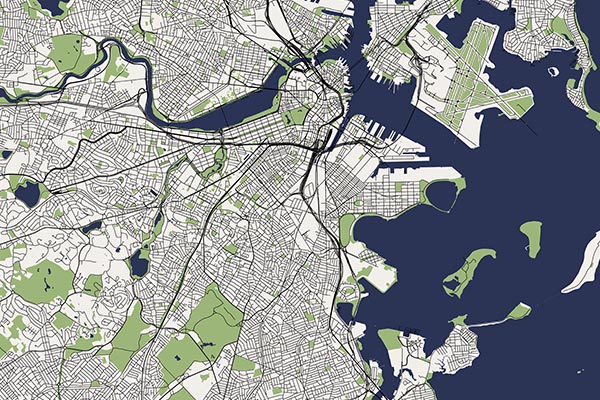
Addressing Climate Injustice through Community-led, Nature-based Solutions

Place: Chelsea, Massachusetts, United States
Learn more: www.greenrootschelsea.org
Current land use in Chelsea is a direct consequence of historic redlining. More than 60 percent of the existing housing stock in residential parcels was redlined in 1938 and now contributes to the community’s high ratio of impervious surfaces, an absence of open green space, and below-average tree canopy cover—all of which strain the City’s stormwater system and exacerbate the urban heat island effect, with Chelsea often averaging 20-40 degrees higher than nearby Boston suburbs. Gasoline, diesel, ethanol, and other petroleum products are stored in massive tanks near extremely low-income black, Indigenous and people of color (BIPOC) neighborhoods. Heavy industry, major roadways, and Logan Airport’s flight paths create toxic air for residents to breathe, making Chelsea’s air quality among the worst in the state. Extreme heat, predicted sea-level rise, and flooding compound these climate and public health crises. In the summer of 2020, an innovative, cross-sector partnership emerged to address these challenges, bringing together the environmental justice organization GreenRoots, the City of Chelsea, the Boston University School of Public Health, and local foundations. The immediate success of this inspiring partnership led to the installation of eight hydration stations in the community. Now, the team has proposed to build on this past success by implementing a nature-based pilot to reduce heat, improve air quality, and provide a green oasis in an ultra-urban, heat impacted neighborhood. Residents will work together with partners and pro-bono landscape design consultants to design and install a green space that can serve as a heat/carbon sink, transforming a vacant lot into a cool green respite with trees, plantings, shade structure, and benches. Pre- and post-monitoring and surveying with neighborhood residents will determine the use and benefits of this demonstration projects, and heat index data-gathering and mapping will be youth-led with the Environmental Chelsea Organizers Youth Crew, in partnership with the University. The project team will conduct multilingual community outreach to connect residents in heat-vulnerable neighborhoods to cooling solutions, with the goal of developing community-based leadership on intervention strategies, greenspace design, and other cooling ideas. Ultimately, the team’s model will use diverse resident-led heat interventions paired with community-led data analysis to identify future policy and program interventions to make this project replicable.
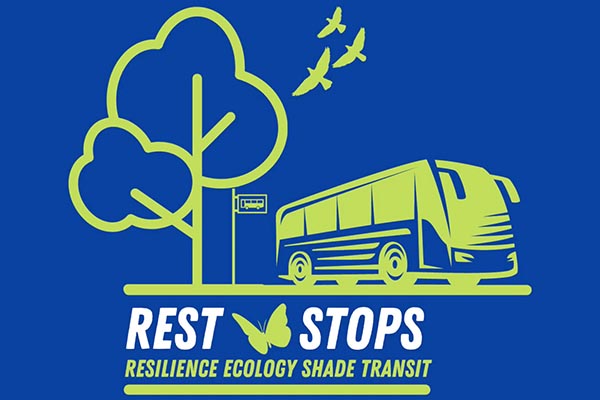
Resilience Ecology Shade Transit (REST) Stops for Community Climate Justice, Resilience, and Health

Place: Houston, Texas, United States
Learn more: https://linkhouston.org/
Houston residents face many transportation-related challenges, including systemic health disparities, inequitable transit choices, climate-change-exacerbated flooding, environmental degradation, and extreme heat hazards intensified by urban heat islands. Low-income and BIPOC communities—more than three million of 4.5 million residents in the Houston metro area—experience the greatest impacts of these intersecting issues. Many of these residents rely on affordable transportation, such as walking, rolling, biking, and riding local transit to access opportunity, and are as a result most exposed to harm. To address this problem, the REST program proposed by this team will harness genuine community-based participatory research, planning, and implementation to identify where and how to create more resilient, healthy bus stops. The team aims to improve bus stop design, planning and development in people- and nature-centered ways. First, the team will identify priority BIPOC transit-riding communities, using socio-economic, transit ridership, urban heat island, and high-resolution LiDAR tree canopy shade data, along with a review of existing community plans. Building on this data collection effort, the team will conduct community-based participatory research in 2-3 priority communities to identify resident preferences for on-the-ground changes around bus stops, such as shade structures for urban heat, green stormwater mitigation, green space equity, support for natural biodiversity, and climate-friendly travel improvements. Once community priorities for REST projects are established, the team will support community-led projects in the form of either a pilot program or a friendly competition involving mini sub-grants from the project team—a process that will foster learning and opportunities to test aspects of the emerging REST models. Ultimately, the team will synthesize all of this information into action-oriented tools with clear ties to existing community plans and local/regional/state funding mechanisms, and provide a power map for community members to seek change. If funded, these project outcomes will empower communities in Houston as well as provide an accessible and equitable template for other regions to promote climate resilience and racial equity in their transit networks; and through this community-driven approach, will provide a clear case study of how to successfully achieve a delicate balance between a community’s needs and applied outcomes.
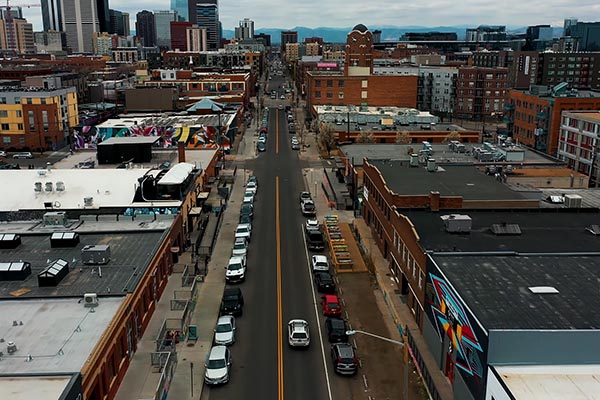
From Redlining to Green: Natural Solutions through Small Business Leadership

Place: Denver, Colorado, United States
Learn more: https://www.nwf.org/Rocky-Mountain-Region.aspx
Denver’s Five Points neighborhood has been dominated by manufacturing and rail industries since it was founded in the 1860s. The historic neighborhood was the first predominantly African American community in Denver, and the area has been shaped by redlining and disinvestment that has exacerbated the lack of green space, heat island effects, lack of sidewalks, low tree canopy, and impervious surfaces. The Five Points area has a high heat vulnerability index, characterized by less than 15 percent tree canopy coverage—one of the lowest impervious surface ratings in Denver—and less than two acres of parks for every 1,000 residents, compared to a City-wide average of 7.14 acres. These issues affect all residents and visitors to Five Points, especially the predominantly BIPOC long-term residents who also face displacement and gentrification. To address this challenge, the National Wildlife Federation is partnering with False Ego, a Black-owned small business in Five Points, as well as a property developer, the University of Colorado Denver, and Denver Botanic Gardens. The team has proposed to pilot on-the-ground, publicly-accessible demonstration projects in the River North (RiNo) district of Five Points that incorporate more trees, permeable surfaces, and native/xeric gardens. These demonstration sites will restore pollinator-friendly, water-smart, and climate-resilient greenery in the neighborhood; highlight to local business leaders how they too can transform their own spaces within the community; and serve as a model for other communities, in Denver and beyond. In parallel, the project team will actively build relationships with other BIPOC communities in Denver to learn their values and vision for incorporating more greenery, and they will work with the City of Denver to identify barriers and formulate strategies to navigate them or advocate for policy changes to reduce their impact. Informed by these outreach efforts, the team will develop a toolkit for businesses to implement their own green infrastructure solutions and to navigate city processes or policies. If funded, this project will bridge the gap between urban land use practices and community needs by transforming business’s public spaces.
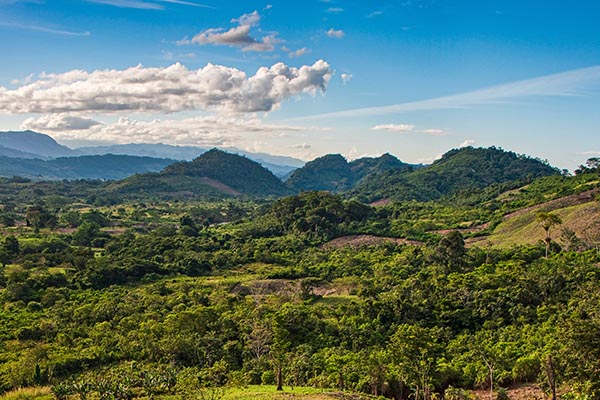
Montetik: The wooded crown that protects San Cristobal de Las Casas, a magical city

Place: San Cristobal de Las Casas, Chiapas, Mexico
Learn more: http://www.pronatura-sur.org/web/
The community of San Cristóbal faces interrelated challenges at the intersection of water and population growth. Water has historically infiltrated through the surrounding mountains and flowed downstream to the San Cristóbal community, but more than 50 percent of the mountains’ historic ecosystem has been lost to urban growth, illegal logging, and stone material extraction for construction. Coupled with regional climate change—particularly severe drought and flood events—this human-driven activity threatens groundwater wells, and San Cristóbal is facing a significant decrease in the quantity and quality of available water. To combat this problem, Pronatura Sur is partnering with the El Aguaje Indigenous community, the municipal government of San Cristóbal, and a network of natural reserves in Valle de Jovel to better conserve the local mountain ecosystem. The El Aguaje are long-term stewards of the local forests and have been working for decades to conserve water and forest resources to the benefit of all people who live downstream in San Cristóbal. This team’s proposed project will formalize the El Aguaje’s conservation efforts by instituting legal protections for these local forests, including the Montetik Ecotourism Park. In addition to providing protection for more than 800 hectares (nearly 2,000 acres) that connect several private reservations and are highly important for water capture and weather regulation, the project will restore altered areas of the forest, train community guides and monitors, and implement a public awareness campaign to increase understanding of the community’s role in supporting resilient water resources and ecosystem services in the city. The El Aguaje Indigenous community will also benefit from the formal protections, which will improve infrastructure and expand ecotourism services in the Montetik park, and in the longer term, the project team hopes to secure payments to the El Aguaje from the city for the ecosystem services their lands provide.
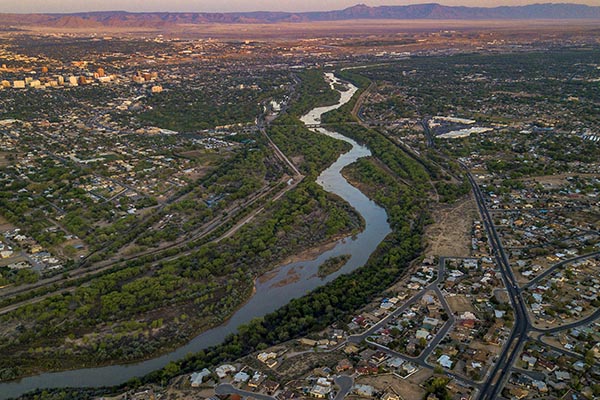
Catalyzing Watershed-Scale Change and Preserving Puebloan Lifeways in the Middle Rio Grande Corridor

Place: Middle Rio Grande Urban Corridor, New Mexico, United States
Learn more: http://treeswaterpeople.org/
In the eastern Jemez Mountains, a century-long history of fire exclusion, paired with prolonged drought, has resulted in a series of high-intensity fires throughout the region that have destroyed significant portions of critical watersheds. Cumulative impacts from fires, floods, and drought have led to substantial ecological decline, including in the Middle Rio Grande watershed, which flows through the Jemez Mountains and provides drinking water to nearly one-half of New Mexico residents. As a result of this degradation, downstream residents have been flooded out of their homes and watched as fires reached city limits. Sediment loads have plugged the Rio Grande, shutting down Albuquerque municipal water supply for up to 40 days at a time. For the Pueblos, there is an enormous sense of loss because the landscape that serves as the core of their cultural identity and practice is gone. To address this challenge, this project team has proposed to repair the natural function and structure of Capulin Canyon, in the heart of the Middle Rio Grande urban corridor, and to leverage a cross-sector network of partners to ensure future resilience to disasters related to climate change. This collaborative, Indigenous-led restoration project in Capulin Canyon will improve watershed health and ecological integrity through upland reforestation to improve water quality; support canyon-bottom revegetation with native shrubs and grasses, to provide wildlife habitat and stabilize banks, which in turn improves channel/floodplain connectivity; and undertake invasive species removal from riparian areas. At the same time, the project team will foster community climate resilience by protecting and enhancing access to socio-ecological resources and areas important to Pueblo communities for traditional practices; cultivating and reintroducing culturally significant plants for Pueblo communities; and recruiting Tribal and youth workforce participation in the Pueblo Natural Resource Departments and Rocky Mountain Youth Corps. Throughout, the team will facilitate regular and extensive stakeholder and community input and exchange, and build on existing collaborative structures and models established through restoration efforts in the neighboring Frijoles and Santa Clara Canyons. In the long term, the team’s efforts in Capulin Canyon will set the stage for landscape connectivity and lateral benefits within the urban, hydrologic corridor, and improve meaningful collaboration among Tribes, local organizations, and federal agencies.
